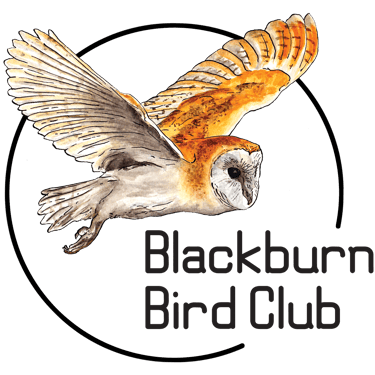
Where to Watch Birds
Birds can be found in many different habitats, from gardens and parks, to water bodies such as reservoirs, grassland, cliffs and designated nature reserves. But it's important to know good places to go to see birds, below are a number of local locations to watch birds, as well as those further afield.
Local Birdwatching Sites
Barrow, near Whalley
Location - SD 737384 / BB7 9AU
Park on Whalley Road opposite Traffalgar Gardens.
Birds - Waxwings can be seen feeding on berries in irruption winters (every couple of years and depending on berry crop status). Visit nearby Barrow Lodge next to MacDonalds off the A59 for water birds such as Kingfisher. Birds here in the past have included rarities such as Slavonian Grebe and Velvet Scoter, as well as passage migrants such as Common Scoter.
Brockholes Nature Reserve
Location - SD 584306 / PR5 0AG
Off the roundabout of junction 31 of M6, follow signs.
General Information - A restored sand and gravel quarry managed by the Lancashire Wildlife Trust.
Birds - Wildfowl such as Gadwall and Shoveler in winter, as well as the now regular Bittern and breeding waders in summer such as Little Ringed Plover and Lapwing. Reed Warbler, Sedge Warbler, Whitethroat, Blackcap and Garden Warbler in spring and summer. Migrating Whimbrel in April including nightly roosts. Osprey are regular in spring and summer, with Hobby in summer also.
Corporation Park
Location - SD 672289 / BB2 6AY
Off East Park Road, Blackburn.
General Information - 2 ponds (1 large, 1 small) and wooded parkland.
Birds - Common woodland birds throughout the year. Water birds on ponds including Goosanders in autumn and winter as well as the usuals. Mandarin Ducks, Kingfisher and Mediterranean Gull all seen here in the past. A good local park to see common birds.
Dean Clough and Parsonage Reservoirs
Location - SD 712328 & SD 700320
Park on York Road, Wilpshire, Blackburn (BB1 4AE).
Birds - Common winter water birds such as Goldeneye and Tufted Duck. Rarer birds such as Great Northern Diver and Common Scoter, especially after gales. Common woodland birds in the wood above Dean Clough. Also Grebes, waders, Reed Bunting and passage birds such as Osprey and Whinchat.
Witton Park
Location - SD 658271
Parking is available off Preston Old Road (BB2 2TP), Blackburn.
Birds - A large park full of woodland birds such as Great Spotted Woodpecker, Nuthatch, Chiffchaff and Blackcap in spring etc. Along the River Darwen there's a great chance to see Dipper, Kingfisher (check duck pond in Pleasington Cemetery, especially in winter), Sand Martins in spring etc.
Weir Street Car Park, Blackburn
Location - SD 68232776 / BB2 2AD
Car park in the centre of Blackburn.
General Information - This car park is full of Rowan trees which are full of berries each winter.
Birds - In certain years this car park is swarming with Waxwings, mainly in irruption years (this is when for a lack of food birds move across to the UK from Siberia, only every few years), although some can be seen in non irruption years occasionally. As to whether Waxwings will be seen here depends on the status of the berry crop in the car park. Also a good place to see winter thrushes feeding on berries such as Blackbird, Mistle Thrush and Redwing.
Sunnyhurst Woods and Reservoir
Location - SD 676226
Park on Earnsdale Road, Darwen (BB3 0LA).
Birds - A great place for woodland birds especially in spring when the usual suspects are joined by Chiffchaff, Blackcap etc. Herons, Kingfishers and Dippers can be seen at Dingle Lodges in the middle of the wood. At the top of the wood is Sunnyhurst Hey Reservoir and further round is Earnsdale Reservoir. Both can be good for wintering wildfowl and passage waders.
White Coppice
Location - SD 620190
Park at Brinscall Baths car park (PR6 8QU), walk through Wheelton Plantation and onto White Coppice (from here you can walk on to Black Coppice and Anglezarke Reservoir).
Birds - In spring it's possible to see Cuckoo, Dipper, Willow Warbler, Chiffchaff, Blackcap, Garden Warbler, Whitethroat and Meadow Pipit. Listen out for Wood Warblers through Wheelton Plantation.
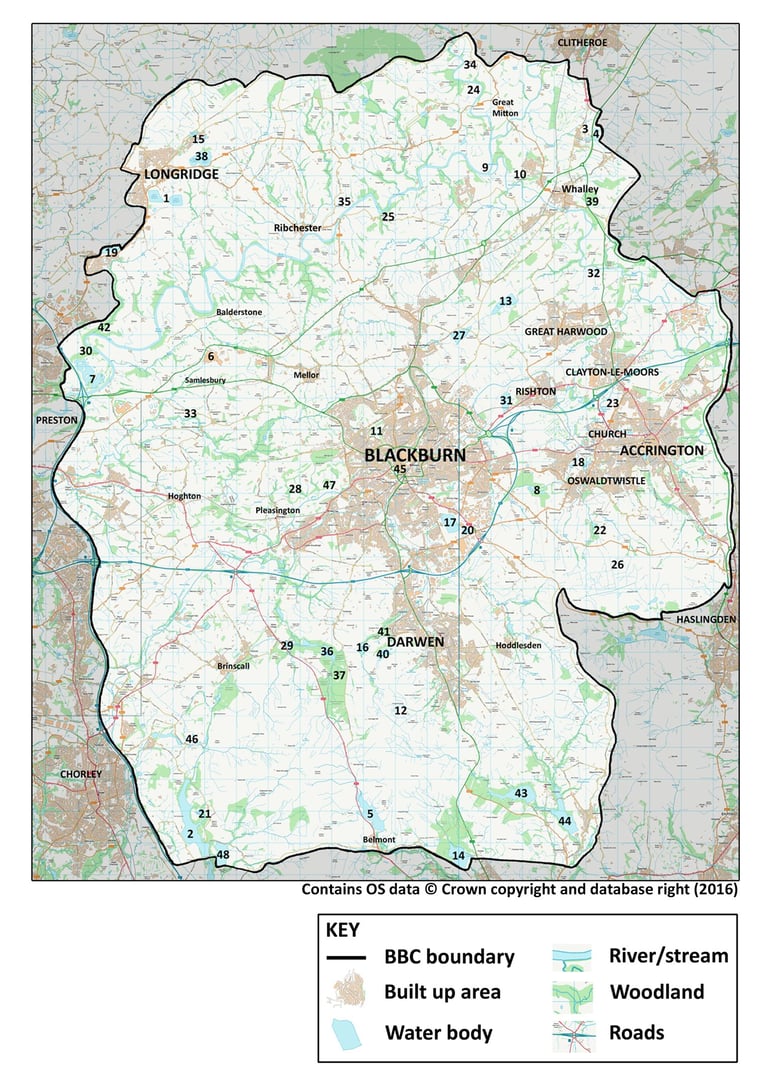


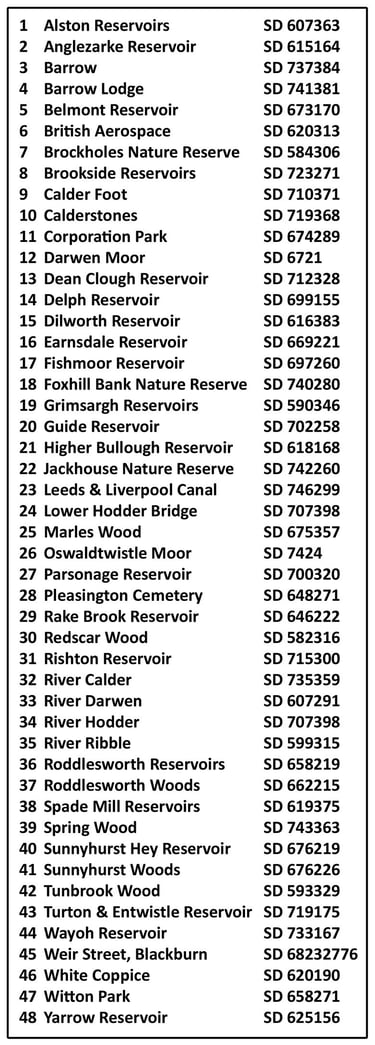
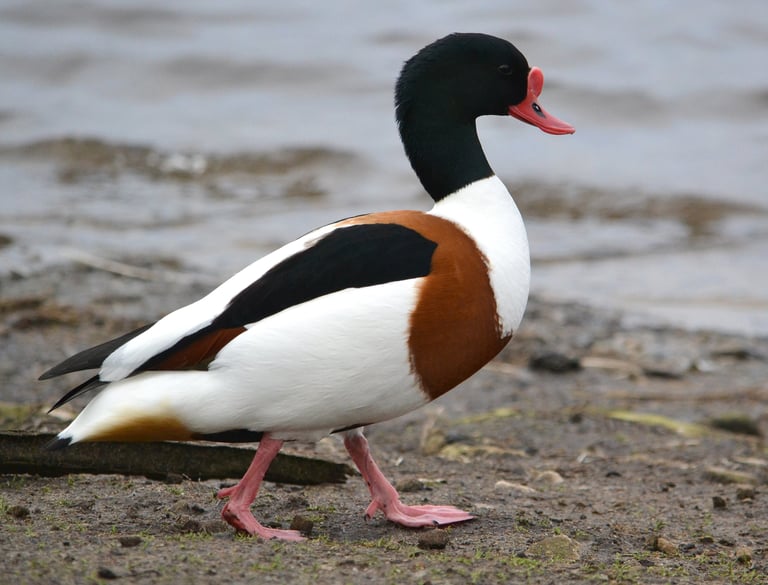

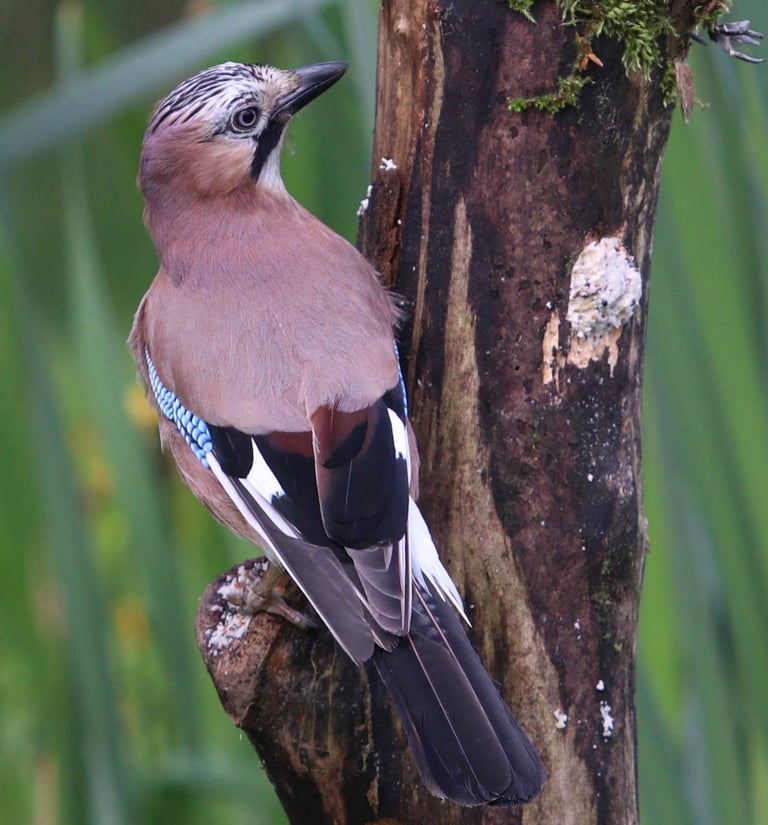

However one of the best ways to get to know good places to go birding is to come out on our Field Walks, gaining much knowledge about the birds and their habitats, and how to identify them from knowledgeable walk leaders. For more information visit our Field Walks page.
Shelduck at Martin Mere, by Jonathan Fry.
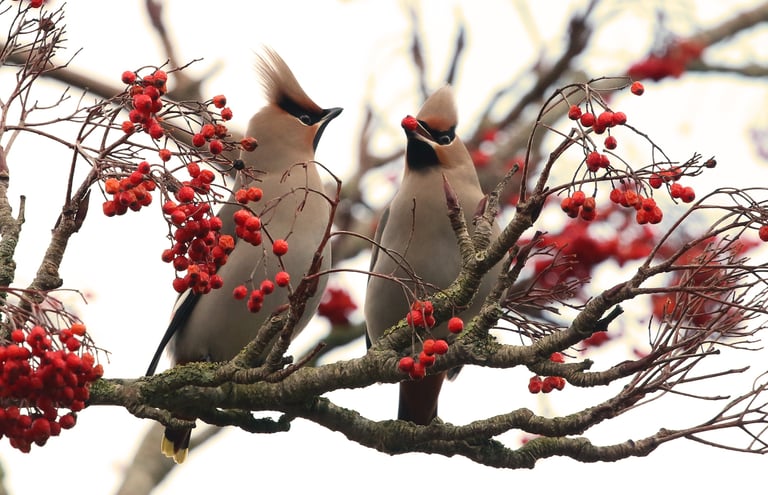

Detailed below are several local birdwatching sites that may be good to visit. Each site is described by location and the birds that can be seen there, along with a map and list of many local sites within the area. Further down the page are other birdwatching sites outside the area.
A pair of Waxwings at Barrow, by Brian Taylor.
Jay by Carol Brown.


Blue Tit by Jonathan Fry.
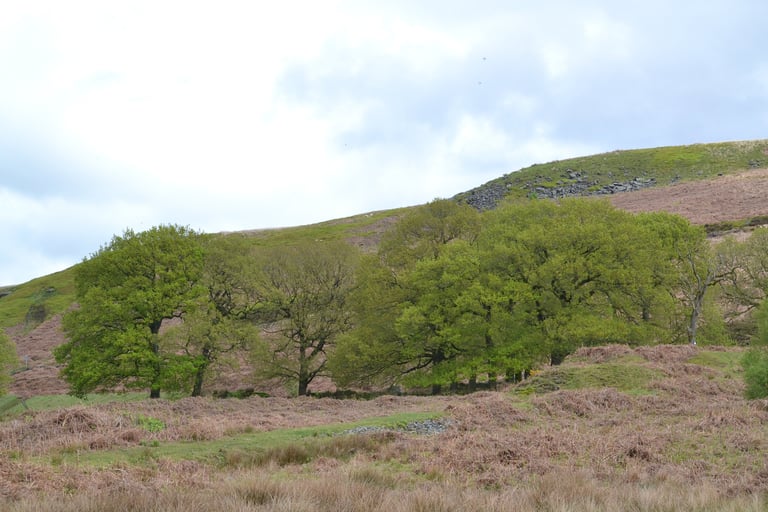

White Coppice by Jonathan Fry.
Local Birdwatching Sites Map
The map below shows 48 local birdwatching sites and their locations. Numbers in the table on the right correspond to those on the map below. These sites can be googled for more information.
Birdwatching Sites Further Afield
Martin Mere WWT
Location - SD 428144
This Wildfowl and Wetland Trust (WWT) reserve is located on Fish Lane, Burscough, L40 0TA. Park in the car park, admission charge for non WWT members.
Birds - A great place to see a wide variety of winter waterfowl including hundreds of Whooper Swans and thousands of Pink Footed Geese. From the Ron Barker Hide the Kingfisher can often be seen as well as a whole host of waders, including breeding Avocet in spring and summer. A good number of raptors are seen through the year including Peregrine, Marsh Harrier in winter and Buzzards. Roosting Tawny Owls can sometimes be seen on the path to the Ron Barker Hide. Migrants through spring and summer including Swallows, Reed and Sedge Warblers and Whitethroat.
Marshside RSPB
Location - SD 352204
Marine Drive, Southport, PR9 9PJ. Park in the RSPB car park on Marine Drive opposite Marshside Road.
Birds - In winter a great place to see lots of winter wildfowl including Wigeon and Pintail, but also Pink Footed Geese through autumn and winter which are sometimes accompanied by rarer geese such as Bean and White Fronted. In spring this is a great place to see migration with Wheatears at the Sand Plant, hirundines like Swallows, as well as other scarce migrants such as Little Gull and Black Tern. Warblers such as Reed and Sedge Warblers breed here, as well as Avocets, Lapwing and Redshank. Rare birds have included Spoonbill, Cattle Egret and Glossy Ibis.
Mere Sands Wood
Location - SD 447159
Park in the car park (small parking charge) off Holmeswood Road, Rufford (L40 1TG). New visitor centre and cafe.
Birds - A wide variety of woodland birds are present all year including Nuthatch, Great Spotted Woodpecker and Jay, sometimes Bramblings are seen in winter and Red Legged Partridge can be seen on the surrounding farmland. A number of winter wildfowl can be seen here, Bitterns have been winter visitors in the past. The pools are home to displaying and breeding Great Crested Grebes in spring and summer and Common Terns breed on the specially made Tern rafts. Warblers also present in spring and summer.
Leighton Moss RSPB
Location - SD 476750
Park in the RSPB car park on Storrs Lane, Silverdale (LA5 0SW).
Birds - Bitterns are present all year, with numbers swelling in winter with the arrival of continental birds. A good selection of winter wildfowl can be seen, plus plenty of winter and passage waders such as Greenshank and Curlew Sandpiper down at the Saltmarsh Hides. Marsh Harriers can be seen all year and Bearded Tits are best seen in October when they come to eat the grit off the grit trays along the Causeway and along the path to Griesedale. Many warblers including Reed and Sedge, Whitethroat, Willow Warbler etc. Cetti's Warbler has become quite frequent. Water Rail and Kingfisher can be seen throughout the year. Ospreys are regularly seen fishing in spring and summer, as well as otters.
Fairhaven Lake
Location - SD 343273
Park on Inner Promenade at Fairhaven either on the road or on car parks at either end of the lake (pay and display). FY8 1AZ.
Birds - Water birds can be seen here year round including common ducks such as Tufted Duck, Mallard etc. A good variety of wading birds can be seen at Granny's Bay behind the Lake, especially known for Grey Plover. The real attraction of the Lake however is in attracting rarities such as Red Necked Phalarope, Wryneck (in dunes), rare Grebes such as Red Necked and rare Divers, including a long staying Red Throated Diver in February and March 2015. More regular uncommon birds seen on the Lake include Scaup, Common Scoter etc. Rare birds can often be found after they are blown onto the Lake due to bad weather.
Forest of Bowland
Location - SD 6650
Birds - A great variety of birds can be seen in the Forest of Bowland area. The main time for migrant birds is spring and summer. Ring Ouzel, Cuckoo and Dipper can be seen up the Langden Valley (Dipper can also be seen along many of the steams in the area such as up the Hareden Valley and at Dunsop Bridge). Whinchat can be seen up the Hareden Valley along with Pied Flycatcher, Garden Warbler and Redstart. Redstart can be heard and seen at Stocks Reservoir. A great variety of birds can be seen at Stocks Reservoir including Little Ringed Plover, Red Breasted Merganser, Common Sandpiper, Cuckoo and although scarce Tree Pipit. Ospreys can also be seen here on migration. Pied Flycatchers also breed at Moore Piece Wood. Meadow Pipits, Swallows etc are common.
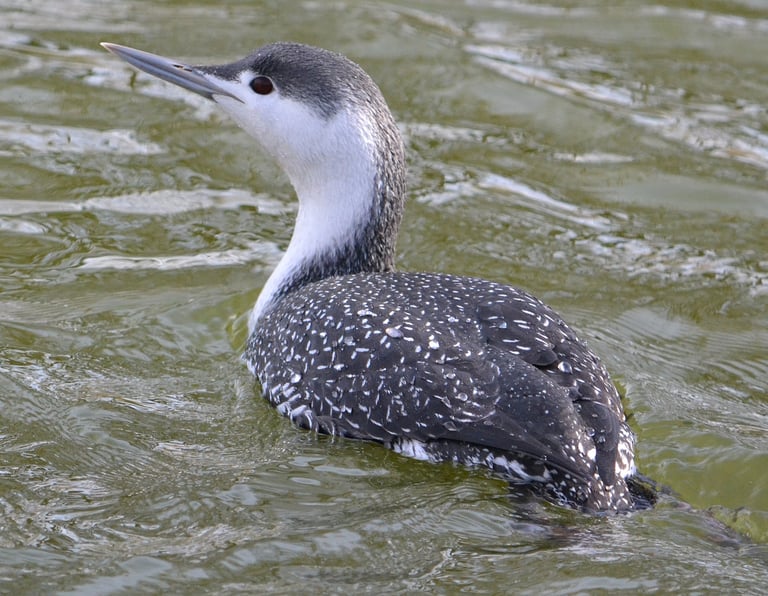


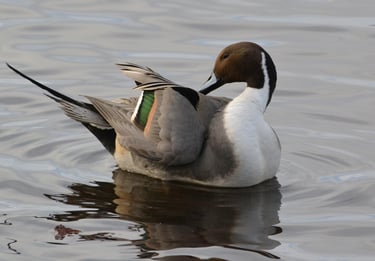
Male Pintail at Martin Mere by Jonathan Fry.
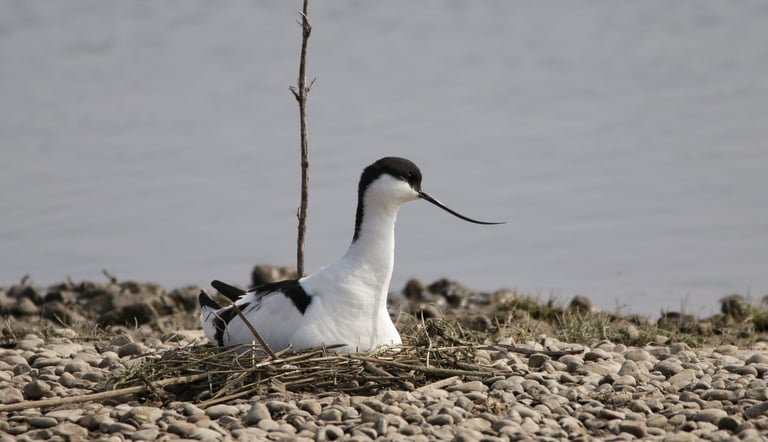

Avocet at Marshside by Carol Brown.
Red Throated Diver at Fairhaven Lake in 2015, by Jonathan Fry.
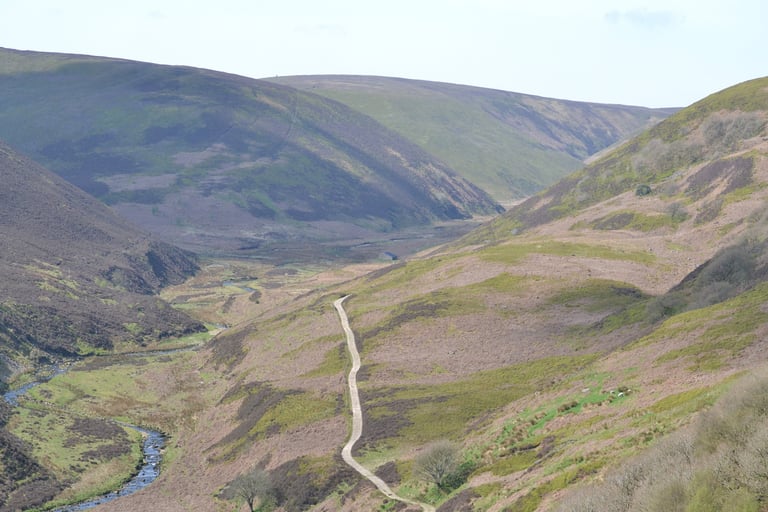

Looking up the Langden Valley in the Forest of Bowland, by Jonathan Fry.

